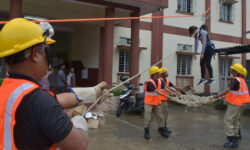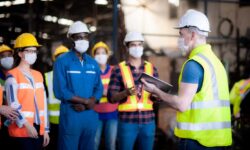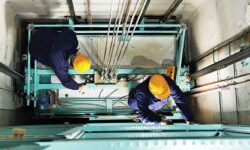Team Development
Team Development in Construction Safety: Building Teams That Save Lives
Walk onto any construction site and you’ll immediately notice the energy. Workers moving materials, machines roaring, supervisors shouting instructions—it’s a busy, fast-paced environment. But behind all that activity, there’s one thing that makes or breaks a project: safety.
Ask any construction worker, and they’ll tell you—hard hats and boots matter, but what really keeps people safe is the team. When workers trust each other, communicate well, and look out for one another, accidents drop and projects run smoothly. On the other hand, when teamwork breaks down, even the best safety gear cannot prevent trouble.
This is where team development in construction safety comes in. It’s about more than training—it’s about building a crew that cares for each other like family, follows safety practices without shortcuts, and creates a culture where everyone goes home safe at the end of the day.
Why Team Development is the Backbone of Construction Safety
Picture this: A worker notices loose scaffolding on the third floor. He hesitates—should he report it? Will the foreman think he’s slowing things down? Before he decides, another worker steps in:
“Hey, thanks for spotting that. Let’s fix it before someone gets hurt.”
That’s team development in action. They don’t fear blame; they act for the greater good.
Why it matters:
- Communication becomes second nature. Workers don’t hesitate to shout “Watch out!” when a load swings overhead.
- Everyone feels responsible. Instead of thinking “That’s not my job,” they think “If I don’t act, someone could get hurt.”
- Safety becomes part of daily life, not just paperwork.
How Team Development and Safety Go Hand in Hand
Construction projects are like orchestras. You’ve got engineers, masons, electricians, safety officers—each with a role. If one instrument is out of sync, the whole song sounds wrong.
In the same way, one worker ignoring safety can put an entire site at risk. But when teams are developed properly:
- Workers communicate hazards clearly.
- Safety officers are seen as allies, not police.
- Emergencies are handled calmly because roles are clear.
Safety isn’t just about following rules—it’s about working as a team.
Stages of Team Development
Have you ever noticed how construction crews evolve? At the start, everyone’s polite but unsure. Then conflicts appear. Eventually, people settle into their roles and the team flows like clockwork.
Psychologist Bruce Tuckman called this the “Stages of Team Development,” and it applies perfectly to construction safety.
- Forming – The Safety Kickoff
-
- New hires arrive. Everyone’s sizing each other up.
- Safety orientation sets the tone.
- First impressions matter—leaders should stress, “On this site, safety comes first.”
- Storming – The Reality Check
- Workers start debating how things should be done.
- Some might argue that shortcuts save time.
- Leaders must step in: “We don’t cut corners here. Safety is non-negotiable.”
- Norming – Finding the Rhythm
- The crew starts trusting each other.
- Reminding a coworker to wear PPE feels normal, not confrontational.
- “We’ve got your back” becomes the vibe.
- Performing – A True Safety Culture
- The team anticipates risks without being told.
- Near misses are reported honestly.
- Adjourning – Lessons Carried Forward
- The project ends, but the lessons don’t.
- Workers carry their safety mindset to the next job.
When leaders guide teams through these stages, accidents drop and trust grows.




